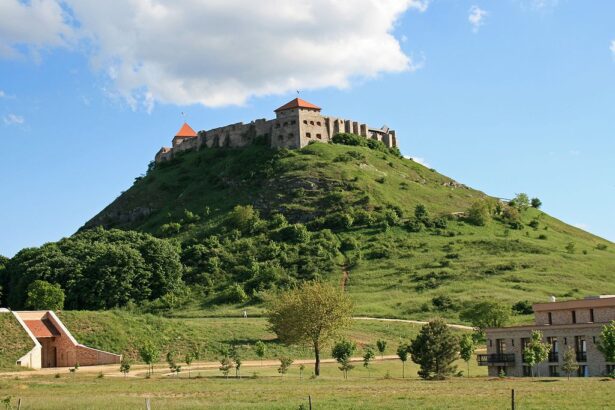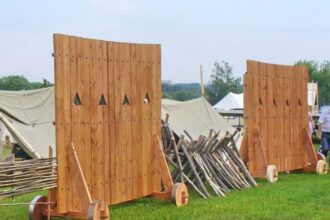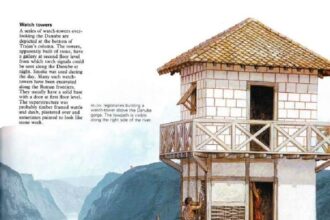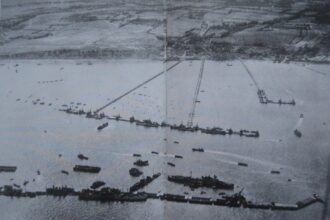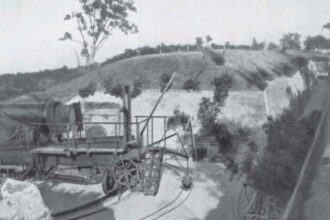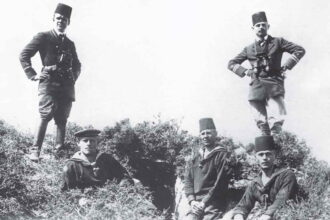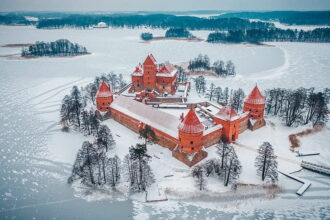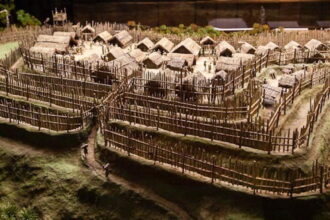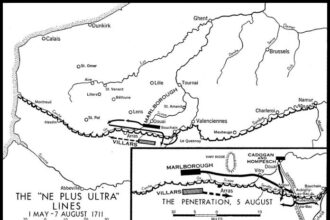Newsletter
Get the latest from Weapons and Warfare right to your inbox.
Follow Us
Explore
Fortification
Sumeg Castle (Sumegi varrom)
Hungary’s best-preserved fortress presumably was built before the mid-13th century since King Béla IV lived here for a while during the Mongolian invasion (1241-1242). It was extended several times during successive centuries. Sümeg Castle is a Hungarian castle built on sümeg’s bald hill. The oldest part was constructed in around 1260. The castle of Sümeg was built from 1262 through…
Most Recent
‘Mulberry’ Floating Harbours
Co-ordinating the effort required awesome organisation and logistics. The Allies had to marshal and maintain over 2 million men, 11,000 aircraft, and 7,000 ships in England. The prodigious industrial output to meet their requirements had to be matched by efficient distribution. The engineering work behind the landings was staggering, and…
The Sea Battles for the Dardanelles I
Fort Seddulbahr before the bombardment on 19 February 1915. Reconstructed Turkish heavy gun site at the Dardanelles Straits before the bombardment by the British and French fleets Turkey’s entry into the war on the side of the Central Powers did not bring about the strategic advantage for which Germany had…
The Sea Battles for the Dardanelles II
A naval artillery observation post on land: standing left, Lieutenant Franz Wodrig, right Lieutenant Rolf Carls. Meanwhile, a major Allied landing operation at Kumkale on 3 March underlined the urgent nature of the munitions question. The almost 400 man strong landing detachment of the Royal Marine Light Infantry was, however,…
Island Castle of Trakai
The most successful example of exporting the castle-building skills of the Teutonic Order may be seen at the island castle of Trakai in Lithuania. Begun by Grand Duke Kestutis, Trakai was completed by his son Grand Duke Vytautas the Great. Taking advantage of a period of truce between Lithuania and…
Turuturu Mokai Pā
This massive pā, still visible today and situated 3 km from the Tawhiti Museum, in the Taranaki region, was built over 400 years ago by Ngatī Tupaea, a hapū (sub-tribe or clan, the basic political unit within Māori culture) of Ngāti Ruanui. Wherever possible a pa would take advantage of…
17th-18th Century Lines
Long, fortified lines were constructed in Europe during this period to connect forts and fortified cities, and enhance defenses for positional warfare. The most important crossed the United Provinces for 100 miles, from the Meuse to the Atlantic, in places connecting pre-existing canals and rivers as natural defenses against the…
Most Popular
Flak towers: then and now
The construction of Flaktürme (Flak towers) in major cities began in response to the first…
Features of an Atlantic Wall Bunker
Features of an Atlantic Wall Bunker The bunker was primarily an instrument of defence. For…
Japanese Siege Weapons
Early Fortifications Although fortifications were constructed in Japan prior to the feudal period, frequent conflicts…
Atlantic Wall: Bunkers and Organization for Defence
Regelbau M162a fire-control bunker for gun battery at Frederikshavn, Denmark, in the summer of 1945.…
